20 Best Vegetables To Grow In Shade (With Pictures)
-
- Last updated:
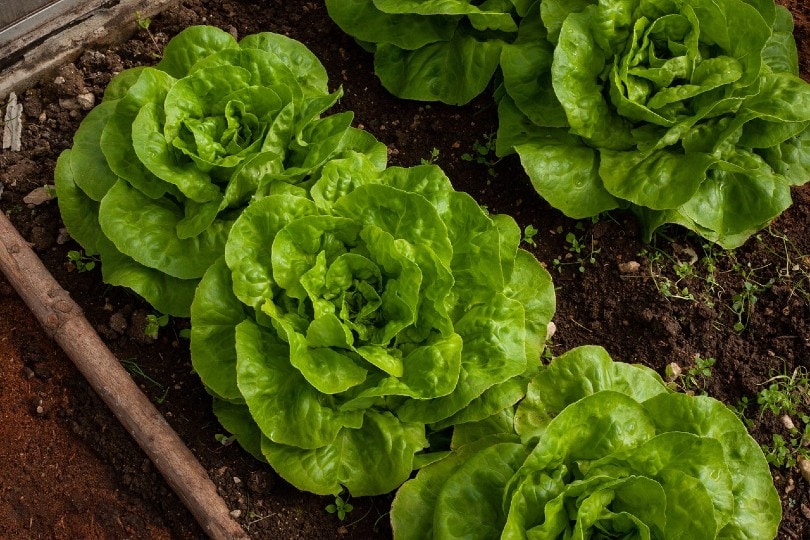
Vegetable gardening is a pastime that is both relaxing and beneficial. Unlike other hobbies, when you’re done, you will have delicious edible vegetables to use for cooking. There are many mental health benefits to gardening, and growing vegetables has one of the best tangible payoffs.
Due to space constraints and climate, not everyone has the ability to launch a large full sun garden, and that is okay. Not all vegetables need full sun. In fact, there are plenty of vegetables that are happy in partial sun or shade. If you have a shady garden, you can still get great crop yields from a variety of different vegetables. Here are 20 of the best vegetables to grow in the shade.

The 20 Best Vegetables to Grow in Shade
1. Arugula
| Type | Leafy green |
| Planting Season | Spring |
| Recommended Daily Sun Exposure | 5-7 hours |
Arugula is a tart leafy green with a peppery taste. It is often used to season salads with other leafy green components. Arugula can be easily grown in the shade, but it also does well in full sun. Arugula is a great addition to any shady garden, especially one that is also prepped to grow other similar leafy greens.
2. Lettuce

| Type | Leafy green |
| Planting Season | Spring or fall |
| Recommended Daily Sun Exposure | 4-6 hours |
Lettuce is a staple of any vegetable garden. It grows well in the shade and can produce good edible leaves many months out of the year. Lettuce is an excellent choice for any gardener looking to grow salad greens in areas that do not receive full sun. Lettuce can grow in the shade, but yields might not be as high as in areas with full sun.
3. Kale

| Type | Leafy green |
| Planting Season | Spring |
| Recommended Daily Sun Exposure | 4-6 hours |
Kale is another popular leafy green that makes an excellent base for salads. Kale should be planted in the spring and is very shade tolerant. Kale thrives in full sun but will also produce favorable yields in partial sun and shade. Kale has grown in popularity in recent years due to its many health benefits. It is a great addition to any garden and compliments other leafy greens.
4. Broccoli

| Type | Brassica |
| Planting Season | Spring or fall |
| Recommended Daily Sun Exposure | 4-6 hours |
Broccoli is another vegetable with a lot of health benefits. The edible part of the plant is the crunchy head which can be harvested up to two times per season. The second harvest will likely be smaller than the first but being able to cut twice per season is a boon. Broccoli does well in cool shady areas and can grow with as little as four hours of sun per day.
5. Cauliflower

| Type | Brassica |
| Planting Season | Spring |
| Recommended Daily Sun Exposure | 4-6 hours |
Cauliflower is a vegetable that thrives in similar situations as broccoli. Cauliflower is another edible veggie in the brassica family that produces crunchy nutrient-dense heads. Cauliflower is a cool-weather crop that can be planted annually. Cauliflower is a great superfood vegetable that can grow with as little as four hours of sun per day.
6. Collard Greens

| Type | Leafy green |
| Planting Season | Spring |
| Recommended Daily Sun Exposure | 3-5 hours |
Collard greens are a staple crop in many areas of the United States. They are great for seasoning and are often enjoyed after being boiled and added to salty meat dishes. Collard greens are great for shade-laden gardens as they can grow and produce a notable crop with as little as three hours of sun per day. Collard greens are a great addition to any leafy green garden.
7. Cabbage

| Type | Brassica |
| Planting Season | Spring |
| Recommended Daily Sun Exposure | 4-6 hours |
Contrary to conventional wisdom, cabbage is not technically a leafy green. It is a member of the brassica family, which means it is more closely related to cauliflower and broccoli than it is to kale. Cabbage will grow in a shady garden with as little as four hours of sun per day. However, less sun means looser heads. Loose cabbage heads are nothing to be concerned about, but they might not present as neatly as professionally grown cabbage.
8. Carrots

| Type | Root |
| Planting Season | Spring |
| Recommended Daily Sun Exposure | 6-8 hours |
Carrots are a popular and recognizable root vegetable that likes to grow in cool soil. Technically, carrots prefer full sun exposure to shade, but they can grow in either. In shady gardens, carrots will take longer to mature, and they will produce smaller edible roots than if they receive full sun, but they are growable in areas that lack that ample sunshine. Do not shy away from growing carrots if you do not have full sun. Just be prepared to wait a bit longer for your crop to come in.
9. Onions

| Type | Bulbous |
| Planting Season | Spring |
| Recommended Daily Sun Exposure | 8-10 hours |
There are many different types of onions and choosing the right one for your garden is imperative to success in shaded environments. Many onions require full sun, but there are species of short-day or winter onions that can get by in the shade. Researching what species of local onions grow best in your particular location is a requirement to choosing the correct species. Onions are popular for their spicy seasoning taste. Both the bulb and the greens can be harvested and are edible.
10. Beets
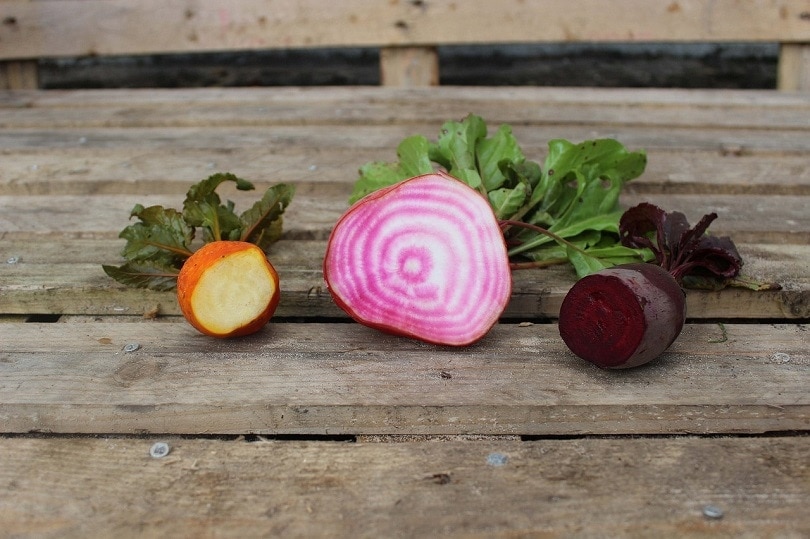
| Type | Root |
| Planting Season | Spring |
| Recommended Daily Sun Exposure | 3-5 hours |
Beets are primarily known for their sweet roots. But beet greens are also edible and used as a spicy herb or salad green. Beets can grow in the shade, but shady beets will not produce the large sweet roots that some people are looking for. If you are going to grow beets in the shade, it should be for their green tops and not their subterranean bulbs. Perhaps beet greens will be your new favorite salad adornment.
11. Spinach

| Type | Leafy green |
| Planting Season | Spring |
| Recommended Daily Sun Exposure | 6-10 hours |
Spinach prefers to be grown in full sun, but it will tolerate partial sun and shade. If you want to plant spinach in a shaded garden, you can, but it might not thrive compared to spinach grown in full sun. Spinach is a tasty and healthy green that can be used in salads or sandwiches, and it can even be eaten raw or added to a smoothie. People love the versatility of spinach, so don’t be discouraged when trying to plant it in the shade.
12. Potatoes

| Type | Root |
| Planting Season | Spring |
| Recommended Daily Sun Exposure | 6-8 hours |
Potatoes are an extremely popular root vegetable. Potatoes thrive in cool weather and in partial shade. Some people say that potatoes are happiest in full sun, but that depends on the environment. Potatoes do not like to be hot, so they are a great shade vegetable for warm climates. Potatoes need room for their roots to grow and produce the large yummy vegetable that everyone loves, so they thrive in loose, cool soil.
13. Oregano

| Type | Herb |
| Planting Season | Spring |
| Recommended Daily Sun Exposure | 8-12 hours |
Oregano is a hardy herb that is native to the Mediterranean regions of the Earth. Some types of oregano love exposure to full sun, but there are varieties of oregano, such as golden oregano, that can grow in the shade. Oregano grown in the shade will not have as much flavor as full sun oregano. However, due to its hardy nature, it can grow almost anywhere if it is tended to properly.
14. Mint
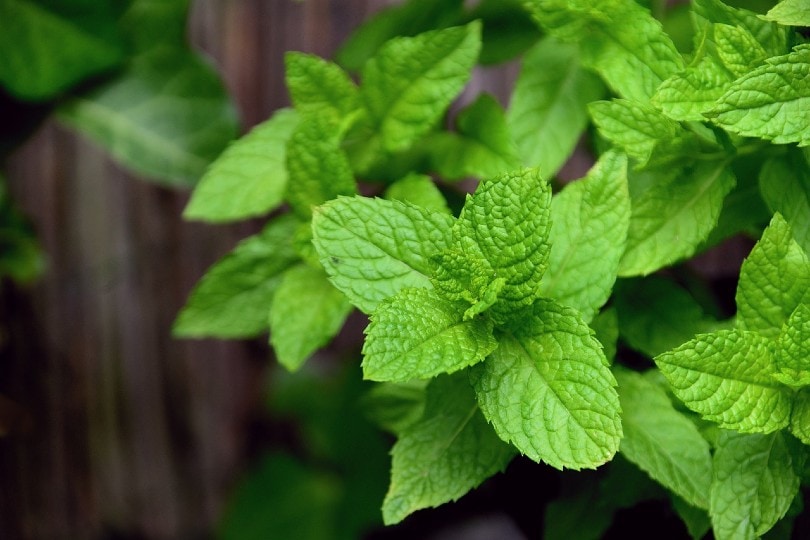
| Type | Herb |
| Planting Season | Spring |
| Recommended Daily Sun Exposure | 6-8 hours |
Mint is a perennial herb that makes it a beloved choice for many herb gardens. Mint can thrive in partial sun as long as the soil is kept moist, but not wet. Healthy mint can spread wildly, and its perennial growing patterns mean that once the mint takes hold, it can thrive for years to come. In addition, mint is a great herb that has an instantly recognizable taste and has a variety of natural health benefits.
15. Cilantro

| Type | Herb |
| Planting Season | Spring |
| Recommended Daily Sun Exposure | 6-8 hours |
Cilantro is a wildly flavorful herb that makes great seasoning (as long as you are not one of the people with the gene that makes it taste like soap). It does well in light shade. Cilantro might survive the winter in warm climates meaning if you live in the southern growing zones, you might get more than one crop out of a cilantro plant. Cilantro enjoys moist, well-draining soil and particularly likes the shade in those hot southern areas.
16. Garlic
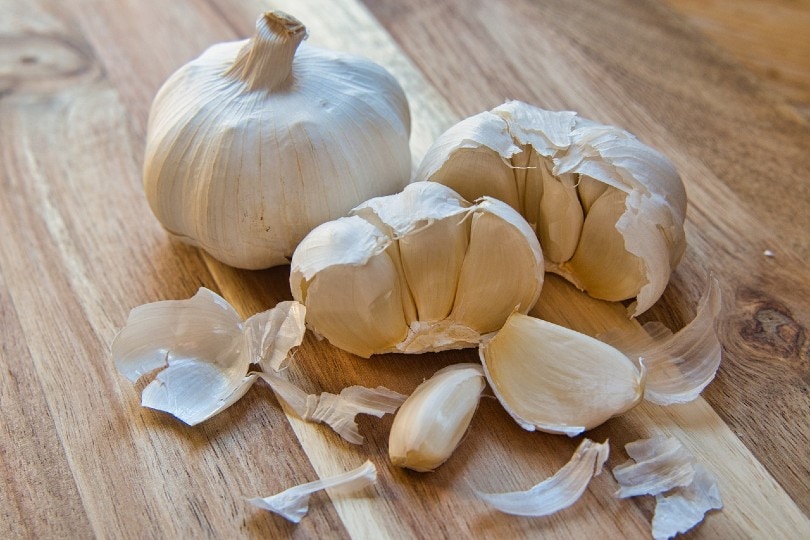
| Type | Bulbous |
| Planting Season | Fall |
| Recommended Daily Sun Exposure | 8-10 |
Garlic is a flavorful vegetable related to onions. They are grown for their pungent bulbs. Garlic is planted in the fall but is not harvested until the middle of the following summer. Good, fresh garlic is worth the wait. Garlic can grow in shady gardens, but due to the long wait, it will require a lot of attention to ensure that it does not die before it is ready to be picked.
17. Green Peas
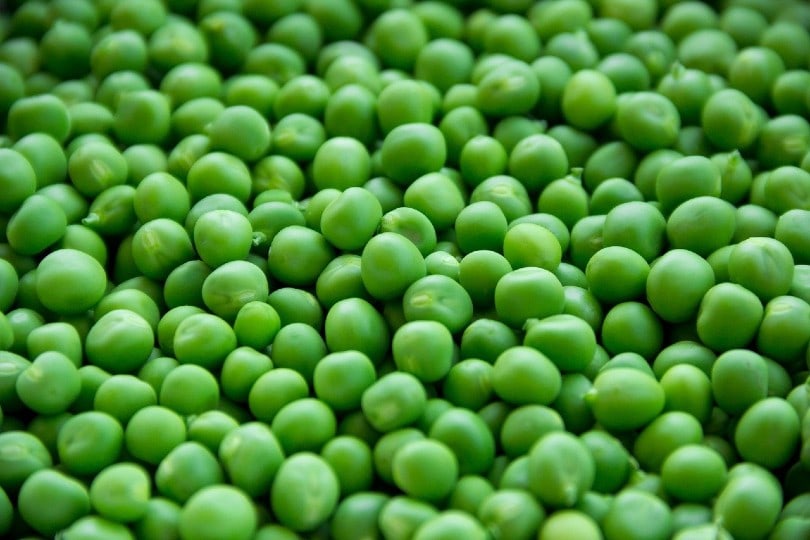
| Type | Pod |
| Planting Season | Spring |
| Recommended Daily Sun Exposure | 4-5 hours |
Peas are flowering vegetables that produce pods with small edible spheres. The green pea is the most common type of pea and is planted in the spring. Peas like cool climates and can thrive on as little as four hours of sun per day. Peas drop off when the days get longer and the temperatures get hot, so planting peas in an area that avoids those harsh conditions will improve the health of the plant and extend the growing season.
18. Green Beans

| Type | Pod |
| Planting Season | Spring |
| Recommended Daily Sun Exposure | 5-7 hours |
Green beans are a plant that produces edible pods similar to peas. Beans do not like high heat and scorching sun, so in hot climates, beans prefer to be in at least partial shade. High heat can cause bean plants to wilt, which will make their buds fall early. Keeping beans cool and shaded can help them thrive in hot climates. They also make for an excellent versatile vegetable for all kinds of meals.
19. Radishes
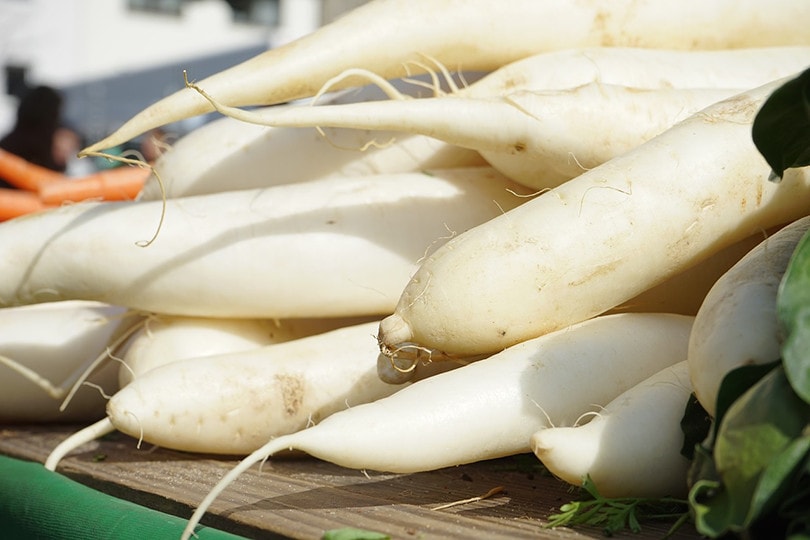
| Type | Root |
| Planting Season | Spring |
| Recommended Daily Sun Exposure | 5-7 hours |
Radish is another type of root vegetable. It is not as popular as their cousins, but radishes are still a staple in some kinds of cooking. Radishes do well in partial shade and can grow with as little as five hours of sun per day. Radishes like to be planted as early in the spring as possible. Like other root veggies, radishes get by in partial shade, but the more shade they receive, the smaller their final root size will be, which is something to keep in mind.
20. Parsley
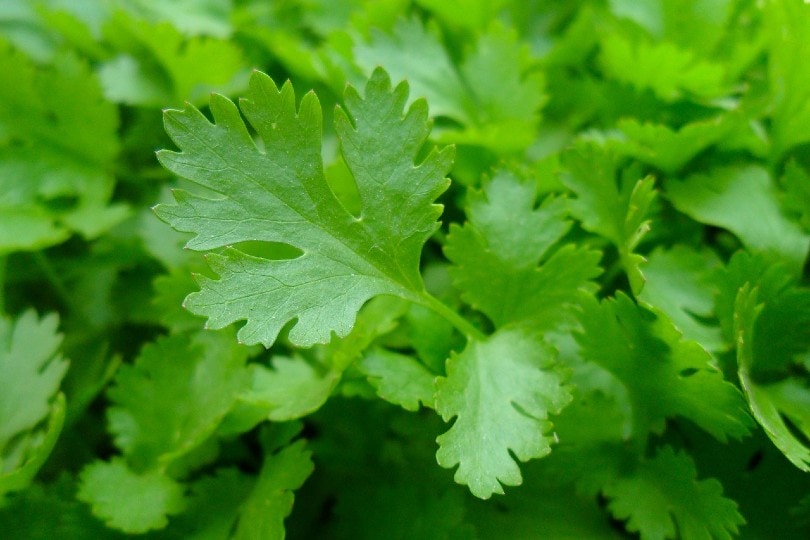
| Type | Herb |
| Planting Season | Spring |
| Recommended Daily Sun Exposure | 6-8 hours |
Parsley is another herb that enjoys cool, well-drained soil. It has a lot of benefits, including taste and nutrition. Parsley will grow well in any shady herb garden. Parsley is happiest when it has continually moist soil, which is a benefit of being grown in the shade. Parsley is commonly used as a seasoning for soups and can be used as a replacement for salt in some dishes.

What Categorizes a Vegetable?
The name “vegetable” is an extremely broad term. The technical definition of a vegetable is any plant matter that is grown for the express purpose of being eaten. The official definition differs slightly from that of the “grocery store definition.” The grocery store definition of a vegetable is narrower and encompasses all of the traditional vegetables that people are familiar with. This is done largely to differentiate certain things from fruits. But for farmers, vegetable refers to almost any plant being produced for food. It is a slight variation but an important one to know about if you plan on growing vegetables.
Full Sun vs. Partial Shade
Knowing the difference between full sun and partial shade can make a huge difference in your growing ability. Full sun means that a spot gets the maximum amount of sun possible per day. Spots in full sun are in sunlight from the moment the sun rises to when it sets. This equates to roughly 6-10 hours of sun per day, depending on the exact climate.
Partial shade means that an area gets less than the maximum amount of sun without being considered full shade. Full shade means a spot gets three hours or less of sunlight per day. Very few plants thrive in full shade. Most plants enjoy partial shade, which is four to eight hours of sun.
Despite what growing guides might say, many plants are flexible in the amount of sun they can get. Less sun doesn’t mean instant death for most plants. Similarly, different environments might change the shade requirements for some plants. Gardens grown in Florida might not have the exact same shade tolerances as gardens grown in Michigan, for example.
The Importance of Plant Spacing
Another thing to consider is how closely spaced plants can shade each other. If you get a healthy batch of lettuce to grow next to a row of carrots, you might inadvertently shade the carrots with the nearby leafy green. It is important to consider what a fully mature plant will look like while you are putting down your seeds. Many gardens fail because people do not account for the proper spacing of their vegetables. A shady area due to a tree or nearby building will only become even shadier if you have a large number of leafy plants growing in close proximity to one another.

Conclusion
There are a large number of plants that do very well in partial sun, allowing you to harvest high amounts of delicious vegetables throughout the year. Do not be discouraged if you do not have a place to plant in full sun, the plants on this list don’t care. This list will allow you to craft a garden bursting with leafy greens, herbs, roots, bulbs, and cooking greens. There is a vegetable garden waiting to be planted in that shady spot just outside your window.
Featured Image Credit: Filmbetrachter, Pixabay
Contents

